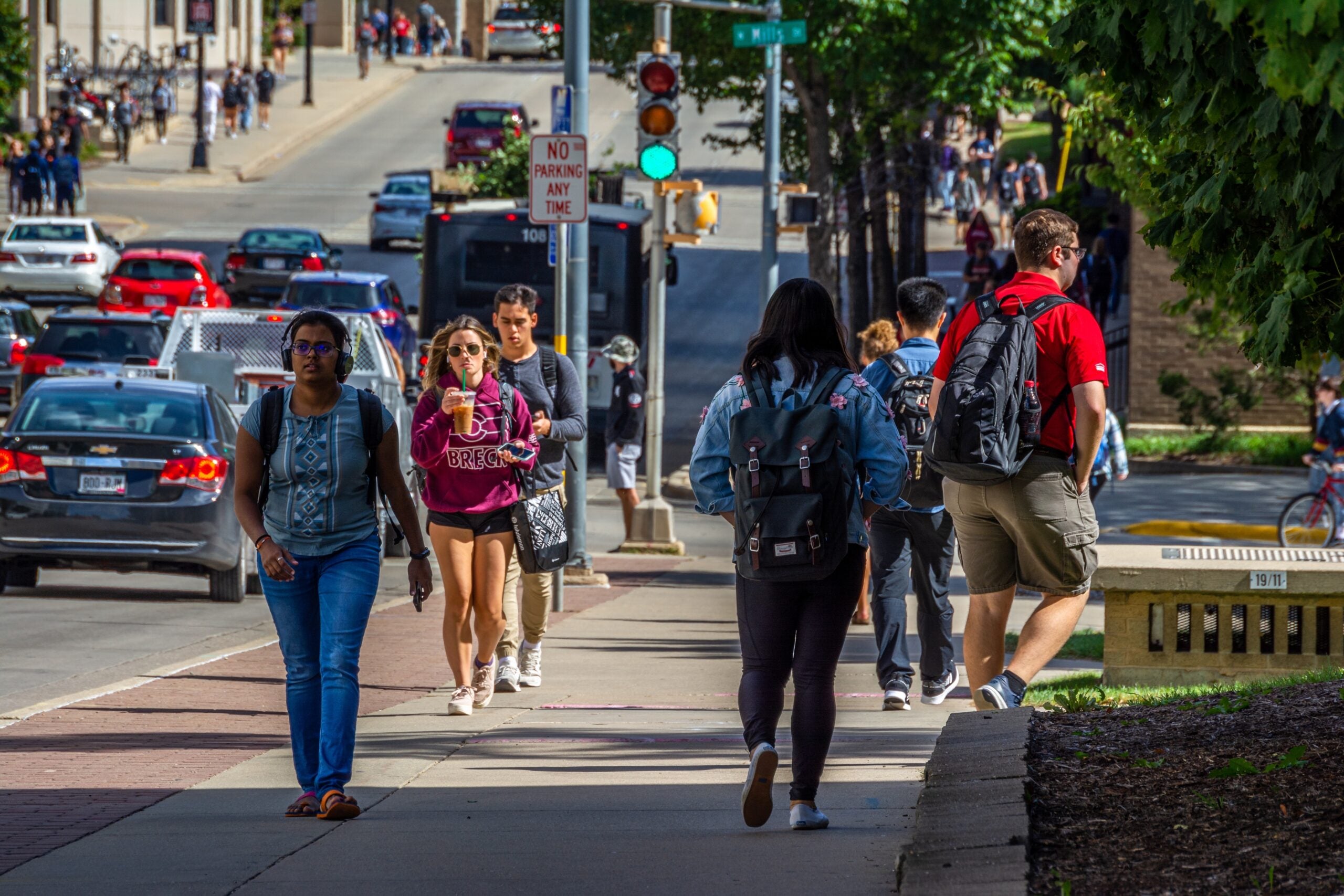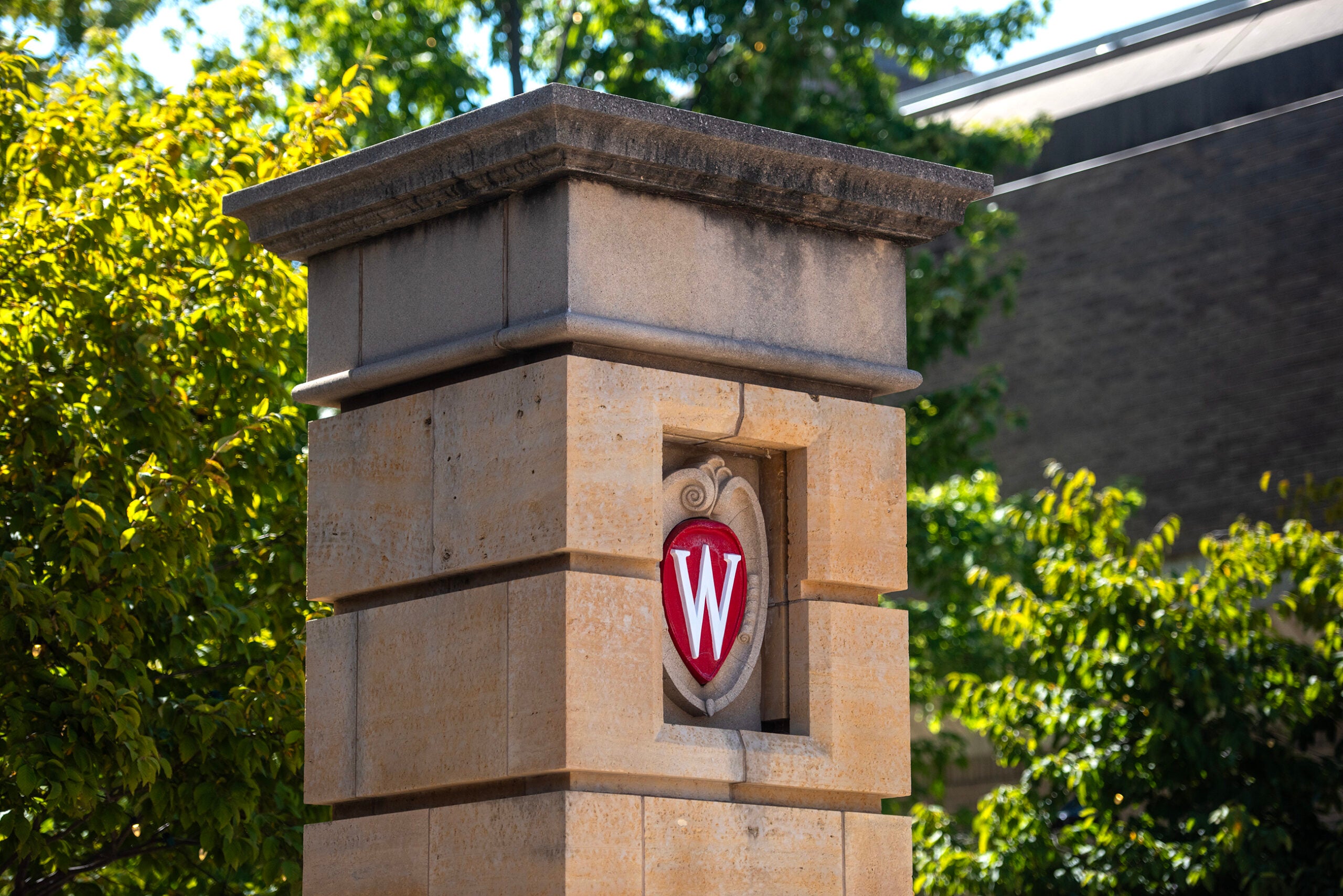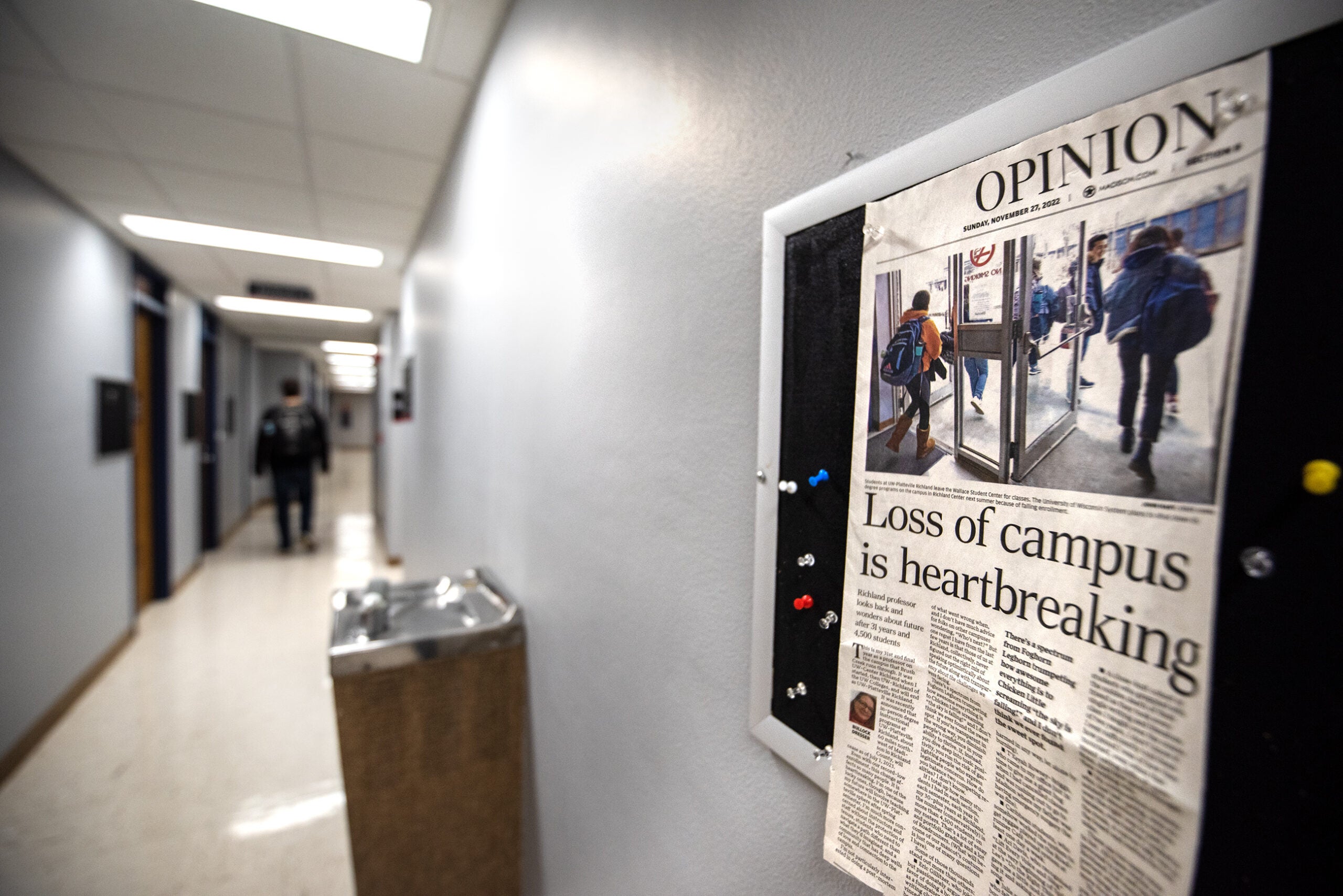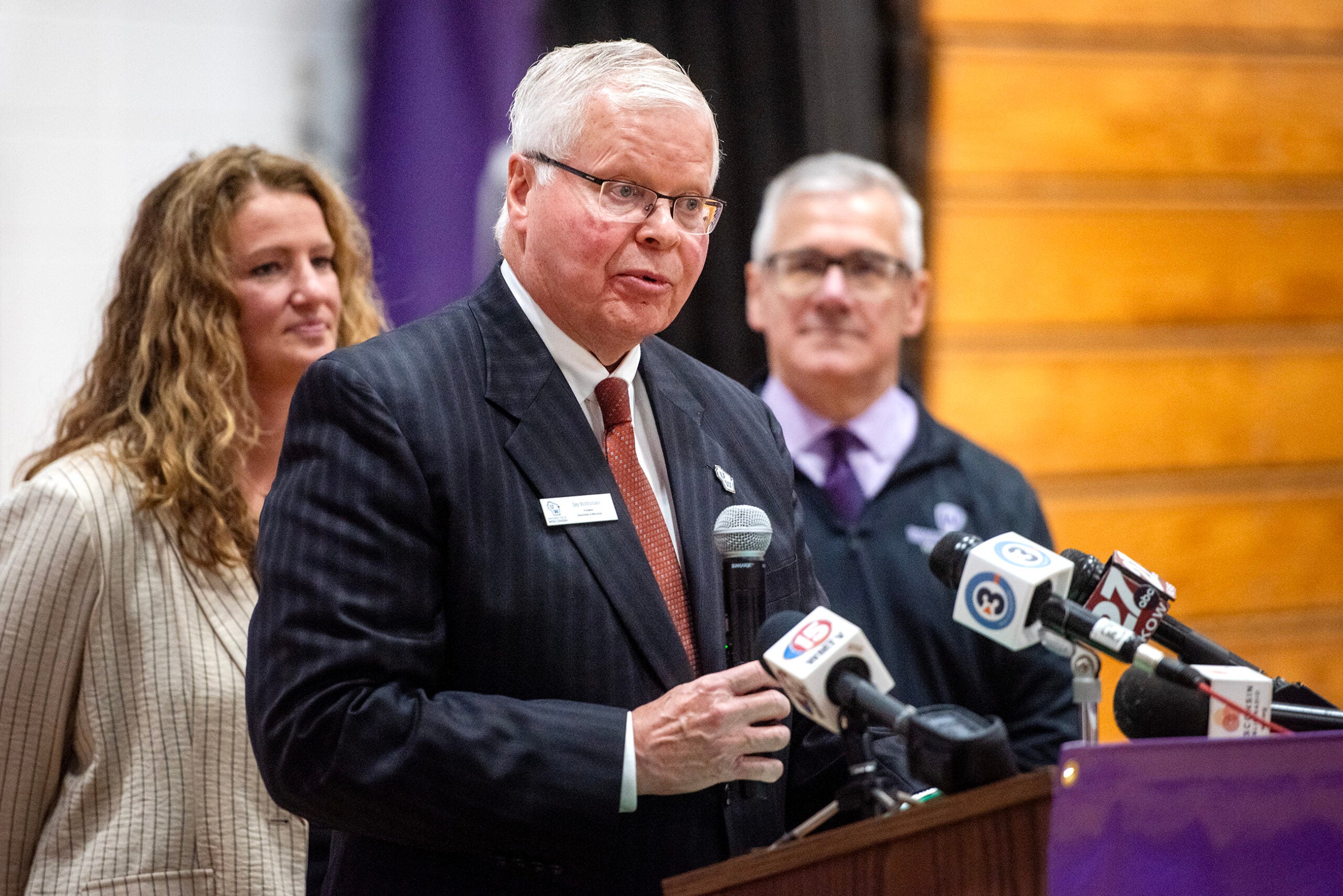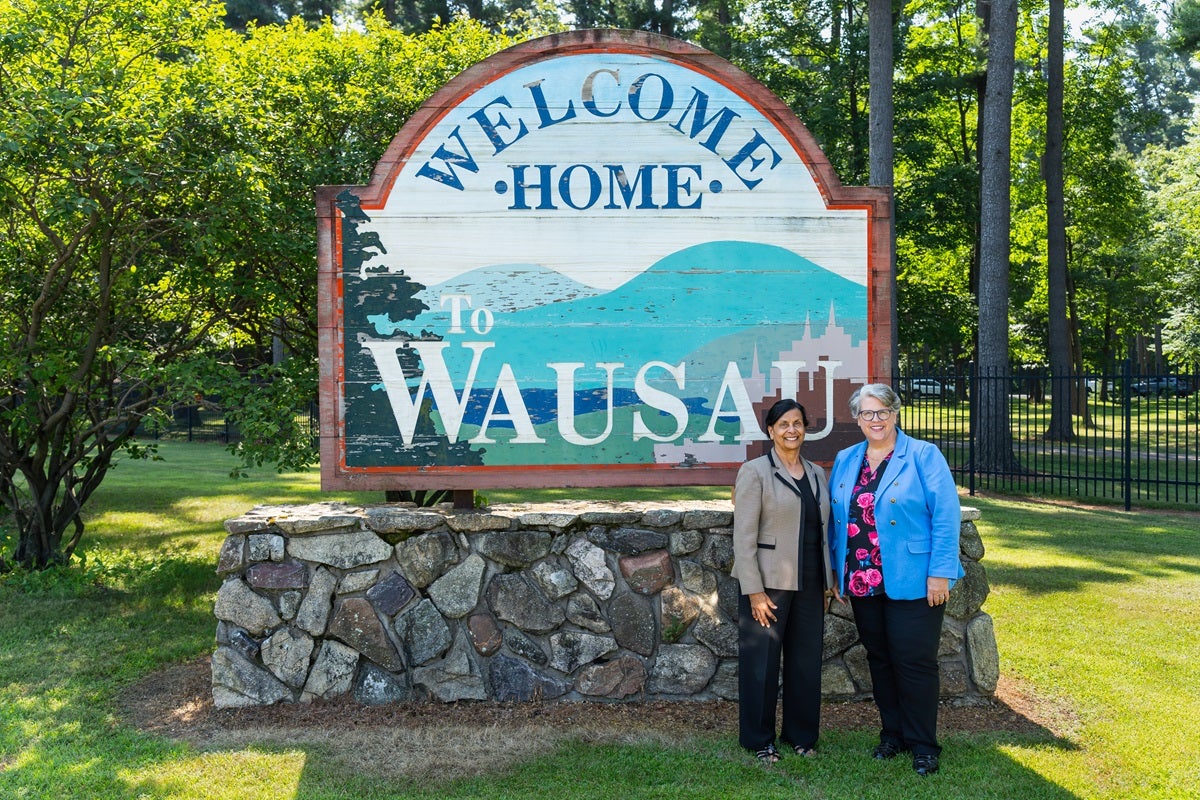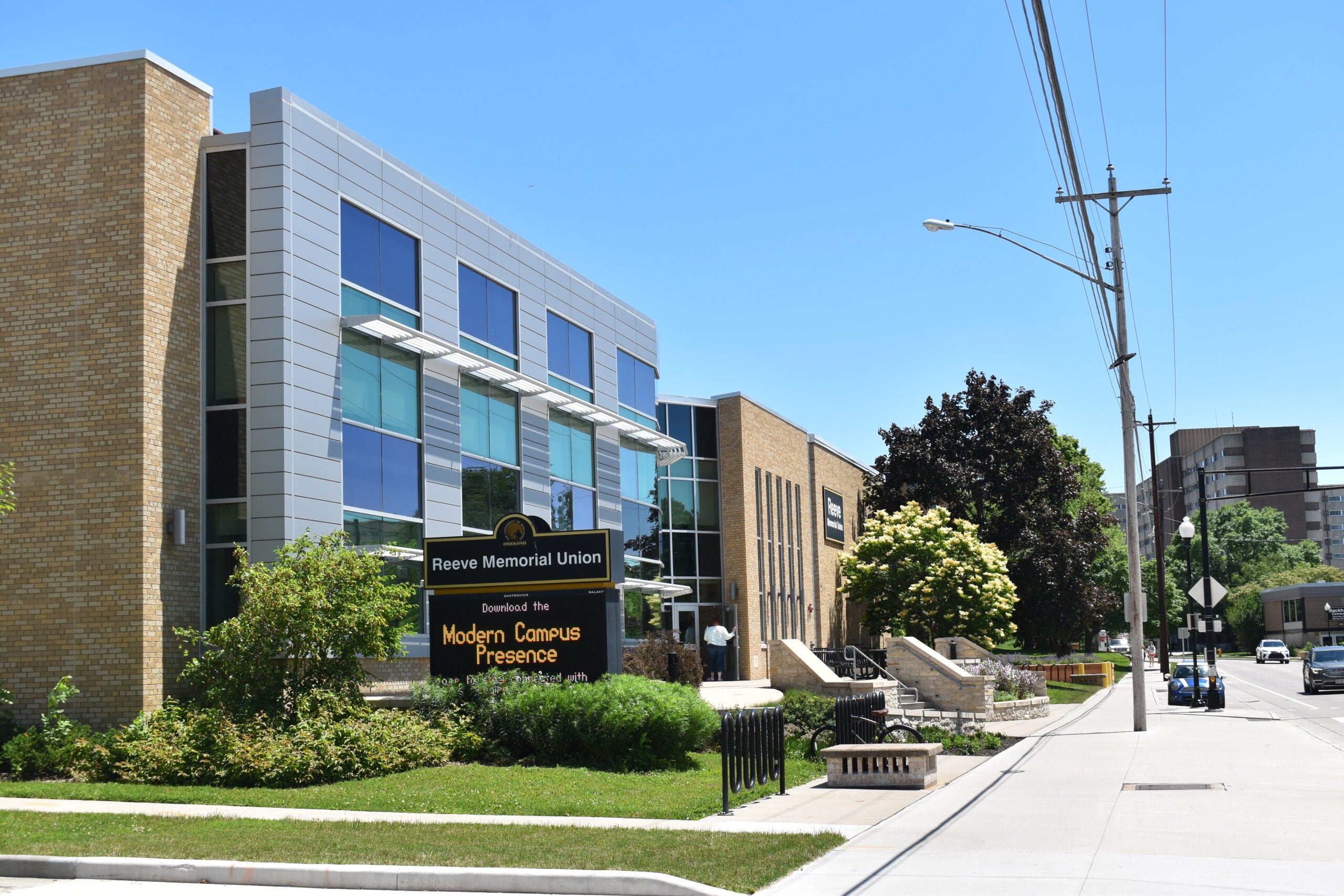The University of Wisconsin System is considering automatically admitting high school graduates to its campuses in hopes of stemming enrollment declines and boosting college access.
The percentage of high school students enrolling at the state’s 13 universities has been falling since 2013, according to UW System data. Historically, 32 percent of high school grads have enrolled at UW schools immediately after graduation. That fell to about 27 percent in 2020.
During a Thursday meeting of the UW Board of Regents in Green Bay, members heard a presentation about how a policy known as “direct admissions” could temper the trend.
News with a little more humanity
WPR’s “Wisconsin Today” newsletter keeps you connected to the state you love without feeling overwhelmed. No paywall. No agenda. No corporate filter.
University of Illinois Urbana-Champaign Professor of Higher Education Jennifer Delaney has researched the approach and told the board direct admissions works by offering automatic admission to high school seniors who meet certain grade point average or standardized test score thresholds.
She said direct admissions sidesteps the traditional application process, which places the impetus on students and parents to fill out multiple college applications in hopes of getting a response. With direct admissions, students, parents and high school counselors are proactively notified about an open spot.
“Right now, we’re having individuals do individual searches for college,” said Delaney. “Those with parents who’ve gone to college have a real advantage.”
Delaney said moving toward a universal admissions policy could help reduce racial and income-based disparities in higher education.
“We’ve gone for a long time in this country thinking that open access institutions means there’s a place for everyone,” Delaney said. “But students don’t always know that, and particularly more vulnerable populations don’t know what open access means or that there’s a place for them.”
The direct admissions approach is relatively new. Idaho was the first state to try it in 2015. Other states like Hawaii and Minnesota have followed suit.
UW-Madison education professor Taylor Odle has researched the topic with Delaney and said more than 120,000 high school students in Idaho have been proactively admitted to college since direct admissions started.
Odle said data shows Idaho and other states using automatic admissions have seen results.
“We actually find that these impacts at the campus level range from between 4 and 8 percent for full-time undergraduate enrollees,” said Odle. “And this was predominantly driven by new in-state students coming in.”
Odle said Idaho also noted a 3 percent decrease in the number of high school students leaving to attend out-of-state colleges.
Minnesota has launched a direct admissions pilot program beginning this fall in which students, high schools and public or private colleges can opt in. Individual schools can set their own GPA thresholds.
Regents discuss college affordability
Later on Thursday, regents heard a presentation about how college affordability may play into declining enrollment. UW System Associate Vice President for Policy Analysis and Research Ben Passmore told the board that all UW schools are more affordable than peer institutions relative to the average family income of students.
“But the general rise in costs in higher education since the beginning of this century and accelerating as we got through the Great Recession, have impacted the perceived and the actual affordability,” said Passmore. “And it leaves us with a substantial problem to be solved.”
Passmore said data show the number of new UW System freshmen from families making more than $100,000 per year has increased from 29 percent of the 2011 cohort to 46 percent in the 2020-21 school year.
“And that is not because we’ve gotten richer,” said Passmore. “It’s because our students, the students that we are attracting, are from wealthier families.”
Passmore said the same is true even for first-generation college students and those from groups the UW System identify as underrepresented.
Passmore said the portion of students from the wealthiest families is likely higher. Family income data comes from the Free Application for Federal Application for Federal Student Aid and students from wealthier families generally don’t fill out the application.
Since the 2011-12 school year, the average, annual cost of attendance at UW schools has risen from $18,046 to $21,896, according to UW System data. That’s despite a freeze on in-state tuition increases that’s been in place since 2013.
With financial aid taken into account, the average net cost per year at UW system schools has increased from $12,129 in the 2011-2012 school year to $14,468 in the 2020-21 school year, according to UW data.
Wisconsin Public Radio, © Copyright 2026, Board of Regents of the University of Wisconsin System and Wisconsin Educational Communications Board.
